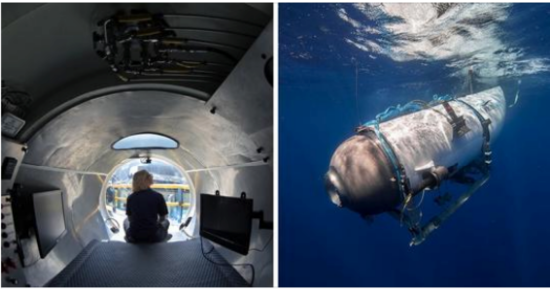The world is still in shock over the Titan sub’s ever-evolving tale and how the tiny, deep-sea vehicle was a disaster waiting to happen.
The OceanGate-operated submersible, which was headed on an expedition to see the Titanic debris.
Reportedly met a tragic end last month when it exploded after losing contact with its mother ship, the Polar Prince.

Along with the CEO of OceanGate, Stockton Rush, four other people perished on the voyage: the British businessman Hamish Harding, the French diver Paul-Henri Nargeolet, the Pakistani-British entrepreneur Shahzada Dawood, and his teenage son Suleman.
Just four days after the boat went missing, the Titan submarine was reportedly destroyed by a “catastrophic implosion” caused on by extreme pressure, according to the US Coast Guard.
The engineer and submarine expert José Luis Martn recently presented his view on what the five crew would have encountered in their final minutes alive. A number of experts have come out to share their perspectives on what was probably to have happened on the Titan’s tragic mission.
Martn, whose theories are based on calculations that take into account the sub’s weight, speed, mass, and thrust, said in an interview with the Spanish news outlet Marca that he believes the passengers on the sub would have been aware of what was happening between 48 and 71 seconds before the fatal implosion.
Even more upsettingly, the expert claimed that the sub likely dropped “vertically” for about 2,900 feet in an uncontrolled way, and that during this final plunge the guys may have lost their balance and fallen on top of one another.
Martín stated: “The starting point is that the submarine is descending without any incidence and in a horizontal plane until it reaches an altitude of about 1,700 meters (5,500 feet). At that point there is an electrical failure. It is left without an engine and without propulsion. That’s when it loses communication with the Polar Prince.”
He goes on to say that, at this point, he believes the Titan would have fallen vertically because of the weight of all five men. “They all rush and crowd on top of each other,” he explained. “Imagine the horror, the fear and the agony. It must have been like a horror movie.”
The New Yorker published a critical article on the deadly ship earlier this week after speaking with experts and former crew members about its inadequate safety procedures.

According to a series of emails the source was able to get, a former employee of OceanGate revealed in one of his coworkers that he had severe reservations about Stockton Rush, the CEO of the business.
In one of those emails the former employee, David Lochridge, wrote: “I don’t want to be seen as a Tattle tale but I’m so worried he kills himself and others in the quest to boost his ego.”
He then reportedly continued: “I would consider myself pretty ballsy when it comes to doing things that are dangerous, but that sub is an accident waiting to happen. There’s no way on earth you could have paid me to dive the thing.”
Lochridge, who served as OceanGate’s head of marine operations from 2013 to 2018, acknowledged that he had thoroughly examined the Titan sub and found a number of mistakes and problems that raised red flags.
In one particular case, Lochridge claimed that he had discovered adhesive that was peeled away at the seams of the sub’s ballast bags and that carelessly positioned mounting bolts might potentially lead to a rupture. The case was later settled.
Lochridge was allegedly so vocal about his concerns for the sub that Rush became infuriated and fired him in 2018.
